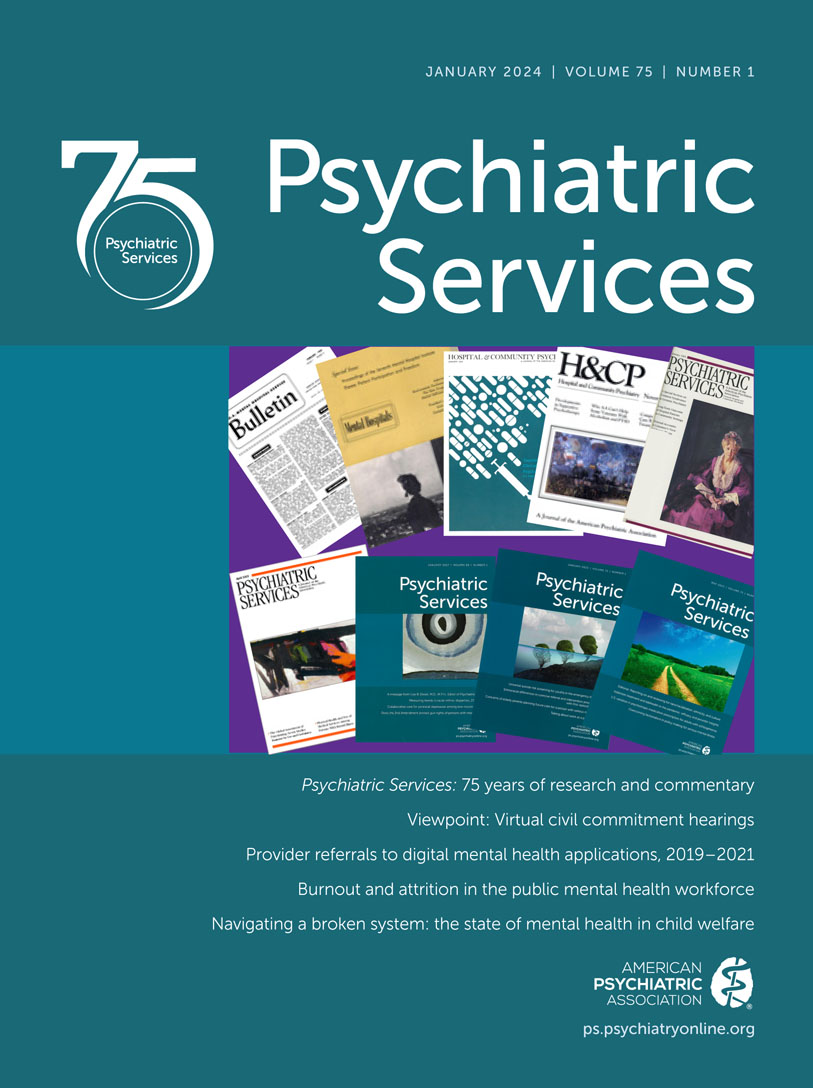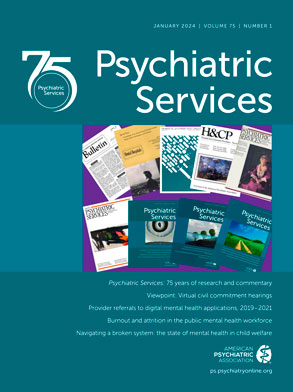I have worked in administrative and clinical roles within the juvenile justice and child welfare systems for a combined 17 years in Southern California and Southern Nevada. As a licensed family therapist, I am responsible for providing clinical oversight to youths in the child welfare system who have serious mental health conditions and trauma. My role is important because I am the bridge between child protective services and residential treatment and an advocate for youths who receive treatment in locked psychiatric residential treatment facilities. I participate in monthly treatment team meetings, which are normally facilitated by the treating psychiatrist at the youth’s facility. I often coordinate with each youth’s team, which comprises their caseworker, who is the legal guardian, and a nurse, who is typically the person legally responsible to give consent for psychotropic medications. Additionally, each youth has a court-appointed attorney, and most youths have a court-appointed special advocate and an educational surrogate. The youths in our care have many needs, and we on the treatment team work together to try to ensure that those needs are met. However, the more extensive the youth’s mental health needs, the more difficult this goal is to achieve, even with a multiperson team.
One truth I have learned while working in the child welfare system is that it is not equipped to supply the care required by youths with extensive mental health needs. Youths who require stabilization within psychiatric hospitals and residential treatment settings tend to need the most support. However, they often do not receive that support because they are bounced around from placement to placement, which almost always leads to a disruption in the services provided as the specific service providers change. If an entire system is unable to meet the needs of these youths, how can an individual like me make even the smallest impact?
Several years ago, a youth by the name of Erica came into my life, and her case quickly became the most challenging case of my career. Erica grappled with severe mental health conditions, which led to her experiencing over 20 foster care placements, more psychiatric hospitalizations than I could count, and three separate stays in locked psychiatric residential treatment facilities. She also accrued multiple delinquency charges and spent time in various correctional settings. Erica was in the child welfare system for 10 years after removal from the custody of her biological parents when she was 6 years old. Yet for all this turmoil, the unfortunate reality is that Erica’s story is not unique: youths with mental health conditions similar to Erica’s are having comparable experiences in child welfare systems across the United States.
I used to often wonder what kept me going to work each day in a system that consistently failed to meet the needs of its incredibly vulnerable charges. My usual conclusion was that the joy that I received from working with children was my reward. However, something changed within me approximately 5 years ago, on a day when, because of a grave shortage of staff, I was working an overtime shift at an emergency shelter for children. Throughout my shift, I witnessed admissions of children—ranging in age from newborns to adolescents—who had been abruptly removed from their biological families, their meager belongings contained in a trash bag or two. Dumbfounded, I watched this miserable parade and wondered whether the children’s trauma could ever be fully repaired. I could sense the range of emotions that these youths were experiencing as they waited to see what was going to happen next. Thoughts about my own two children, which remained top of mind, helped me to relate more effectively to the children in the shelter. I saw children attempting to be children, playful and imaginative, despite their circumstances, and I tried my best to meet each youth’s developmental needs, drawing from my experiences as a father. It was at this point that I made the decision to see how I could effect change within the system.
One of the first changes I implemented was using my voice more during meetings—speaking up on issues I did not agree with and vigorously advocating for the best interests of these children. I also started joining more committees and involving myself in the decision making that was occurring across my department and in courtrooms. For example, I proposed the start of a peer-to-peer roundtable that would include young adults who had experienced success after aging out of the system. I saw that these young adults had the potential to be mentors to the 16- and 17-year-olds currently in the system and could share their journey toward independence. My passion became contagious, and my colleagues wanted to assist me with the peer-to-peer roundtables. I was surprised by their interest because the roundtables added to my colleagues’ workloads, but the mission to fill a void in the system was judged to be worth the effort. During planning meetings, I could see how energized everyone was, and that energy carried over to the peer-to-peer events. Independent living is an important milestone for any youth, let alone system-involved youths. The youths appeared to appreciate the extra time staff were committing to a program that would have such a tremendous effect on their lives.
In addition, I started leveraging my resources from the community to help fund programs. For example, I am a board member of an agency with the mission of providing peer-to-peer support for youths in middle schools and high schools throughout Nevada. I was able to connect several youths in the child welfare system with other peers involved in the program, which restored in them some of the hope that they had lost when they entered the system. After several years of advocating for and amplifying the voices of the children in the system, I started seeing changes slowly occur, which further fueled my motivation. Youths were now having more of a say in their treatment, which positively affected treatment outcomes for some. I also noticed the morale of my colleagues improve, which increased my morale.
Despite some of the positive changes I was noticing around me and within myself, the challenges experienced by so many children remained. Youths who are highly aggressive tend to be escalated through the highest levels of care—the psychiatric hospitals and residential treatment settings—within the mental health and juvenile justice systems, respectively. Many youths are uprooted from multiple placements and put in short-term emergency youth shelters. Sometimes these emergency shelter placements end up being long-term stays because foster families and group homes are unwilling to accept these youths, given how they present in their record, once the emergency is resolved. In other words, once a youth in the child welfare system requires the highest level of care, it is often difficult for them to be placed into foster homes and group homes. There is a fear that these youths will not be amenable to treatment or that bringing a youth with such high needs, like aggression, into a treatment setting would disrupt the milieu. When a youth is denied a placement by these care facilities, that youth may end up languishing in a correctional setting for months on end or be forced to wait indefinitely in an emergency shelter for a placement.
I understand that despite my best efforts, I am unable to “fix” the youths I am responsible for overseeing in these facilities. So, what keeps me motivated? Perhaps it is my growing desire to effect change in these facilities by convincing mental health leaders and policy makers that these facilities are not effective for youths like Erica. My hope is that residential treatment can be reimagined and remade to better help system-involved youths with severe mental health conditions who have experienced immense trauma.
I cannot stop thinking about Erica and the many youths like her. I often wonder whether so many youths in my community would have to be hospitalized during their mental health crises if the continuum of care were sufficient, or could they be stabilized in a subacute hospital setting instead? One of my many concerns is that more and more youths who experience multiple psychiatric hospitalizations and extensive stays in locked psychiatric residential treatment facilities will age out of the system while they are institutionalized. These youths are not going to know how to function outside of the confines of a locked, structured setting. If we, as the coordinators of care for youths entrusted to the child welfare system, do not act responsibly, scores of system-involved youths will become homeless or cycle in and out of jails and prisons as adults. This realization motivates me to continue advocating relentlessly, because these youths deserve to have someone looking out for their best interests. Knowing that these youths will have to navigate a world that is so unforgiving and that they have been forced into predicaments that they did not choose is beyond infuriating to me. By using my voice, I am attempting to strategically create stability and provide the kind of individualized care that these youths would likely receive in a nurturing home.
Knowing that more can be done to effect change across all child welfare systems, I am willing to do everything in my power to change this narrative. The peer-to-peer roundtable is one step in the right direction. When I presented my idea to the director of the agency, I was confident that it could have a positive effect, especially if I received support from leadership. The director was immediately on board, and she quickly empowered me to take the reins and make my vision a reality. This was only possible because she believed in me, but, more important, she believed in the idea and held hope for the future.
It does not take much to go along with the status quo. But when the lives of some of the most vulnerable children hang in the balance of a mostly ineffective system, I would rather die trying to move the dial in a positive direction than idly sit on my hands.

